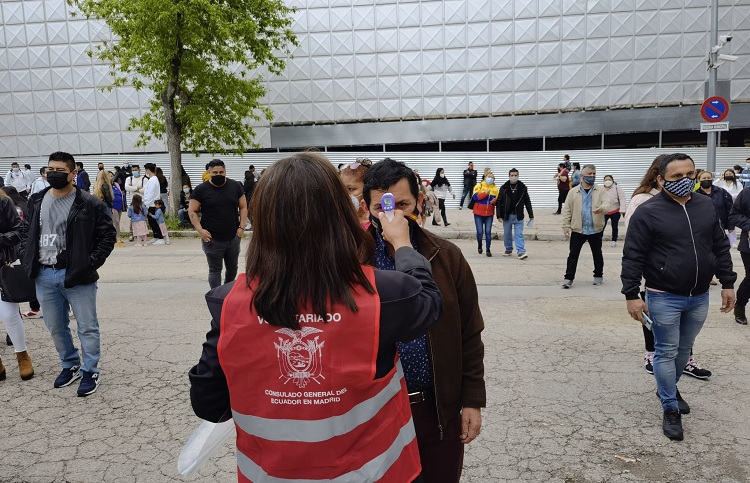The Diplomat
The second round of Ecuador’s presidential elections, held this Sunday, presents a very different panorama between voters residing in Spain and voters in the Andean country as a whole.
According to official data from the CNE (National Electoral Council) for the country as a whole, with almost 99% of the tallies counted, Guillermo Lasso, leader of the CREO Alliance-Social Christian Party, has 52.4% of the votes in his third attempt to become Ecuador’s president, compared to 47.6% for Andres Arauz, candidate of the Union for Hope Party (UNES) and political heir of former leftist president Rafael Correa. Lasso will officially take office on May 24.
On the other hand, the results among the almost 173,000 Ecuadorians with the right to vote residing in Spain show a wide victory for Arauz, who with 100% of the votes counted obtained 66.65% of the votes, against 33.5% for the future president of Ecuador. In addition, abstention in Spain exceeded 62%, compared to 21% in Ecuador as a whole.
In Murcia, where almost 30,000 Ecuadorian voters are concentrated, the victory of the leftist candidate is even wider, with 75% of the votes. In the rest of Spain, the percentages are similar to the rest of the country, with 63% for Arauz in Madrid (where there is the largest community, with almost 67,000 voters) and 65% for the leftist candidate in Barcelona (with almost 37,000 voters). 62% of the Ecuadorian electoral roll abroad is located in the Europe, Asia and Oceania constituency. Spain concentrates 71% of the vote in the Europe, Asia and Oceania constituency and 43% of the vote abroad.
According to the Embassy of Ecuador in Spain, the 375 polling stations distributed throughout Spain complied with the biosecurity, ventilation, disinfection and social distancing measures recommended by the CNE and the respective Autonomous Communities, and included temperature control points, provision of hydroalcoholic gel, masks and protective equipment. The largest electoral venue was the Pabellón de Cristal in Madrid.






